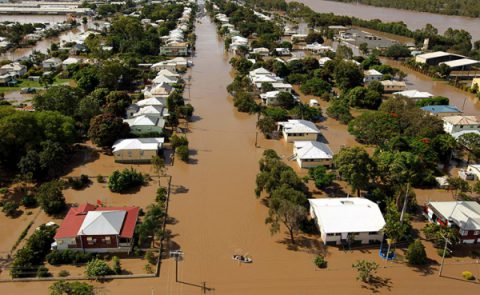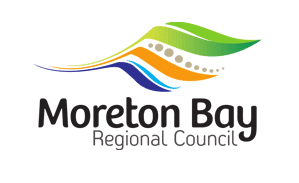
We are one of Australia’s leading consulting firms in all aspects of floodplain management. Molino Stewart has been advising property developers and managers as well as state and local governments in New South Wales, Victoria and Queensland on the implications of flooding and flood risks on property development since the company’s inception.
Our experience with managing complex, multi-disciplinary floodplain management projects on some of the highest risk floodplains in Australia means our leading experts have a profound understanding of the complexities of flood behaviour and mitigating flood risk. We can provide advice and analysis to assist your development team design projects in areas subject to flooding in a way that will meet the requirements of approval bodies for life safety, asset protection and ecological sustainability, quickly and efficiently.
Molino Stewart’s experience in development planning includes land use studies and master planning and the development of policies and planning instruments such as Local Environmental Plans (LEPs) and Development Control Plans (DCPs) etc. We have also provided expert testimony in environment and planning courts in New South Wales, Queensland and Victoria principally in relation to flood risks to life and, in particular, the appropriateness or otherwise of development taking into account the potential for isolation by floodwaters and the practicalities of the emergency response phase.
Some examples of our projects include:
Georges River Floodplain Risk Management Study – Phase 1
Molino Stewart is currently commissioned to undertake the Georges River Floodplain Management Study Phase 1. Georges River is a major catchment in the Greater Sydney Region with history of flooding and is poised to accommodate significant future growth and development. In this ground-breaking floodplain risk management project, Molino Stewart is coordinating with all floodplain and catchment managers across the eight Councils within the Georges River catchment to work towards understanding the challenges and opportunities across the floodplain at all scales. This project represents a unique opportunity to look at the catchment as a whole in a systematic manner to assess what is known about flooding, its impacts and its management in order to decide where resources need to be focused in the future to improve knowledge and better mitigate impacts. This involves a collaborative approach to understanding flood modification, improved urban planning and development control, or better emergency response at both at local and regional levels. This study will cover the Stage 1 of the regional flood risk management process where the available information and data will be collated and reviewed to determine the scope of the strategy covering the entire Georges River Catchment, which will be undertaken in the next stage.
Penrith CBD Catchment FRM Study and Draft Plan
Molino Stewart was engaged to lead the preparation of the new Floodplain Risk Management Study and Plan for Penrith CBD. The work, which is currently ongoing, builds upon a flood study covering a 34km2 catchment with very high resolution, which however required extensive review and upgrades. As part of the project, Molino Stewart is leading an innovative bottom-up approach to community engagement, based on “drop in” session, use of community forums and dedicated communication channels to reach out to specific stakeholders, including the developer community and the Chamber of Commerce. Additional tasks include the identification and evaluation of flood mitigation options. This will result in advanced strategic planning and emergency response measures to balance high-rise redevelopment and flood risk, and may adopt a shelter in place approach where appropriate.
Moreton Bay Regional Council Interim Floodplain Development Controls

As a result of the 2012 Queensland Floods and subsequent Queensland Floods Commission of Inquiry (QFCI), there was significant pressure for Council to establish a consistent set of flood development controls.Council engaged Molino Stewart to prepare an interim set of planning policies and controls that conformed to the recommendations of the QFCI and state planning policies. This was due to be replaced once a more robust review of the flood risk could be undertaken. One of the key challenges of this project was the legacy issues faced by Council from the amalgamation of three separate Councils that had different planning controls and information.
Review of Flood Policy and Flood DCP Provisions (Parramatta City Council)

Molino Stewart was engaged by Parramatta City Council to assist in the development of their strategic Masterplan (known as the City River Strategy). A key component of this work was to undertake a strategic review of the floodplain risk management processes and documentation within the LGA, with a particular focus on reviewing both the current and the proposed Parramatta Flood Policy and Flood DCP provisions.
On-site Flood Emergency Management Plan (Gold Coast City Council)

The City of Gold Coast is highly exposed to the risk from storm surge and riverine and
flash floods and it is estimated that there are over 50,000 people living in premises affected by high level flooding. New development in flood-affected areas needs to comply with the relevant Flood Overlay Code, particularly in relation to evacuation planning. However, a recent decision by the Queensland Planning and Environment Court determined that measures to facilitate sheltering in place, including a Flood Emergency Management Plan (FEMP), are an acceptable alternative solution to reduce risk.
Molino Stewart was engaged to develop guidelines for the Council to permit it to assess the quality and effectiveness of FEMPs submitted by proponents. We developed an evaluation guide which provided minimum FEMP requirements, quality criteria and provided guidance to developers which included developing a FEMP template.
Flood Constraint Studies (Stage 1 and 2) (NSW Land and Housing Corp (LAHC))

Molino Stewart was engaged by LAHC to investigate flood risk for 134 sites it was considering for redevelopment across the Campbelltown, Cumberland, Camden, Canterbury-Bankstown and Penrith local government areas. Molino Stewart analysed the flood risk based on factors including the type of flooding, maximum depth, frequency, flow velocity, hazard level, floodwater rate of rise and the duration of isolation. We evaluated the implications of flood risk on the suitability of site for LAHC redevelopment, and identified where controls could reduce the flood risk at each site to an acceptable level via structural or non-structural mitigation measures.
Smith St Preschool Flood Risk Management Report (Appwam Pty Ltd)
Molino Stewart advised the client on the property and operational modifications required to manage flood risks at a building that was proposed to be converted to a child care centre. Molino Stewart provided expert testimony in relation to the development in the NSW Land and Environment Court (LEC) and our recommendations were accepted by the LEC and the development approved. Molino Stewart also prepared a Flood Emergency Response Plan (FERP) to meet the approval conditions. The FERP set out in detail all of the flood risks at the centre and how they should be managed. It described the way in which the centre could be affected by flooding, factors which needed to be considered in planning for flood emergencies, an overview of the flood emergency response approach adopted for the centre, the management responsibilities and the features which were built into the centre to reduce flood risks. The FERP also included detailed explanation of the various triggers for implementing the FERP and what actions to take at different times in the centre’s daily cycle.
Central Precinct St Marys ADI Flood Evacuation Analysis (Cardno and Lend Lease)
Molino Stewart provided a Flood Evacuation Analysis for the proposed residential development of Central Precinct, a 135 ha area on the St Marys Australian Defence Industries (ADI) site. This site is located on the South Creek floodplain and Molino Stewart’s work included an analysis on flood evacuation and risk to life for the site. This analysis was conducted using the NSW SES Timeline Evacuation Model, which calculates the time required for vehicular and pedestrian evacuation. The report also included recommendations to maximise the safety of residents of the Central Precinct in relation to flooding.

